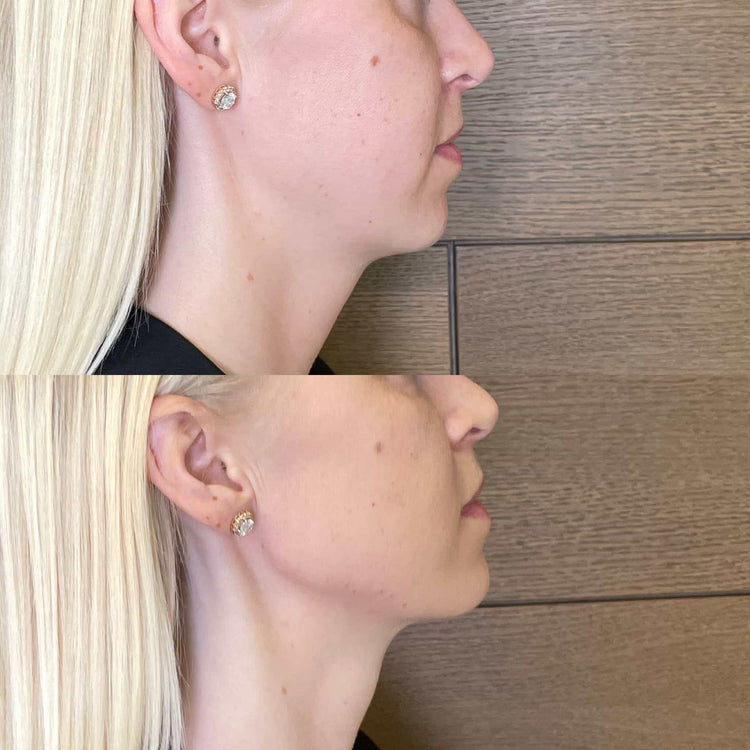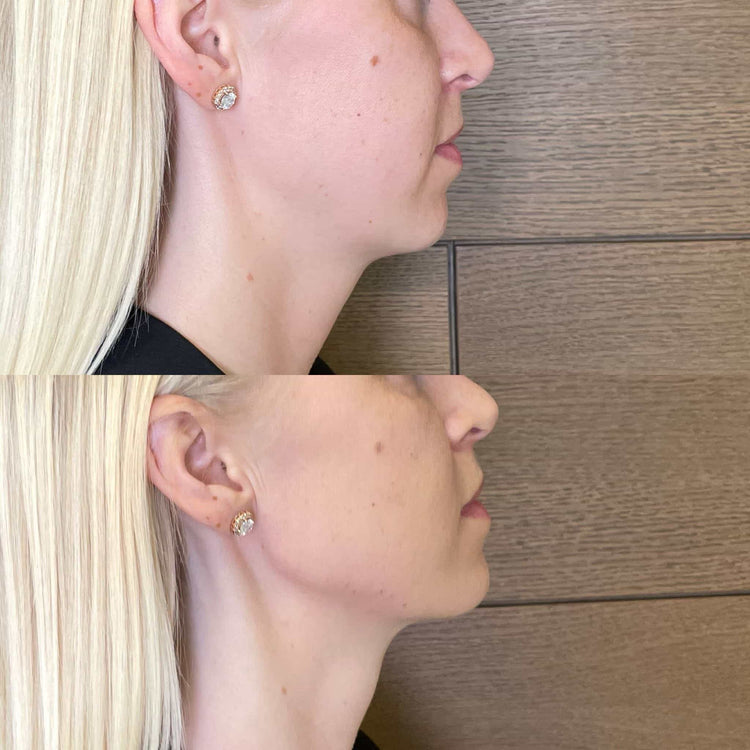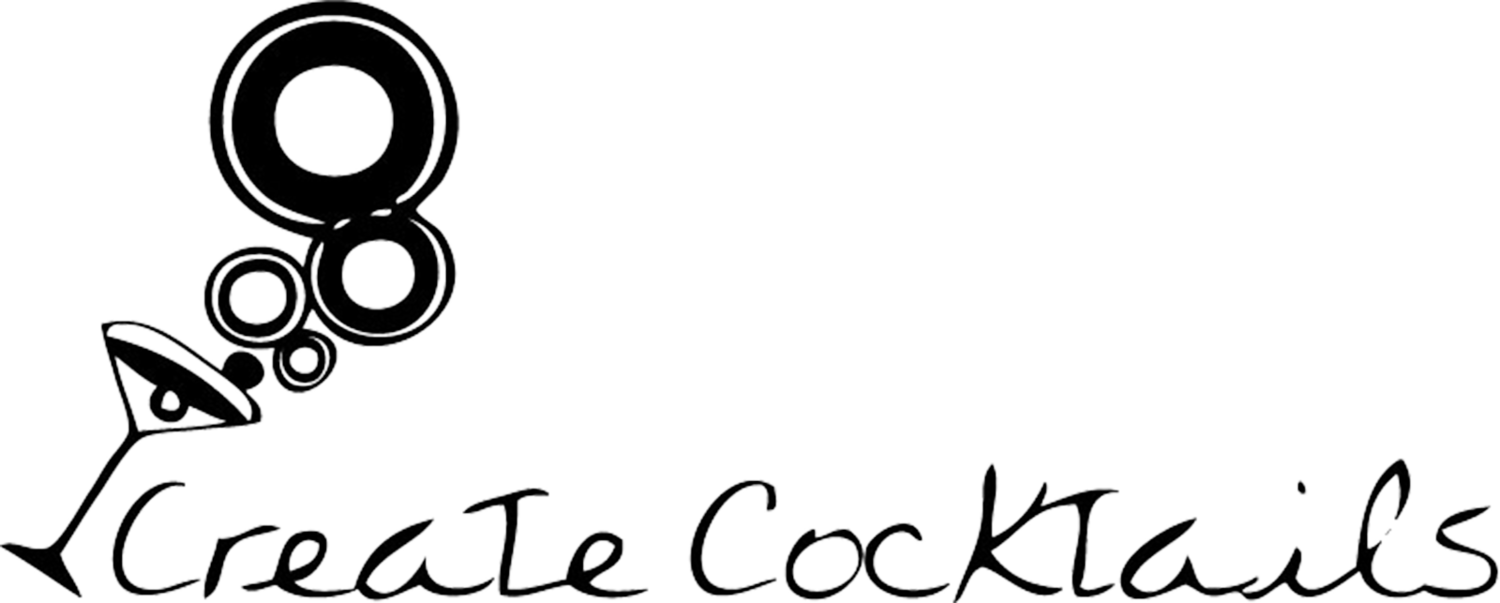Risks Associated with Jaw Fillers
Jaw fillers have become increasingly popular for contouring and enhancing facial features, but like any cosmetic procedure, they carry potential risks and side effects. From temporary discomfort to more serious complications, it’s essential to understand the possible downsides before undergoing jaw augmentation with fillers in Kingston Upon Thames.

Infection
One of the most common risks associated with jaw fillers is infection. When a foreign substance is injected into the body, there’s a risk of bacteria entering the injection site and causing an infection. This can lead to pain, swelling, redness, and in severe cases, may require antibiotics or even surgical intervention.
Other potential risks include allergic reactions, which can range from mild skin irritation to anaphylaxis. Patients should always disclose any allergies they have to the practitioner beforehand.
There’s also a risk of the filler migrating or lumping under the skin, resulting in an unnatural appearance.
It’s important to choose a qualified and experienced practitioner for jaw filler injections in Kingston Upon Thames to minimize these risks.
A thorough consultation will allow you to discuss your concerns and expectations, ensuring that you make an informed decision about this cosmetic procedure.
Swelling and Bruising
Swelling and bruising are among the most common side effects of jaw fillers. This is a normal reaction to the injection process and typically subsides within a few days to a week.
To minimize swelling and bruising, it’s important to follow the practitioner’s post-procedure instructions carefully, which may include applying ice packs, avoiding strenuous activity, and elevating your head while sleeping.
Allergic Reactions
One of the most common risks associated with jaw fillers is infection. When a foreign substance is injected into the body, there’s a risk of bacteria entering the injection site and causing an infection. This can lead to pain, swelling, redness, and in severe cases, may require antibiotics or even surgical intervention.
Other potential risks include allergic reactions, which can range from mild skin irritation to anaphylaxis. Patients should always disclose any allergies they have to the practitioner beforehand.
There’s also a risk of the filler migrating or lumping under the skin, resulting in an unnatural appearance.
Asymmetry
Jaw fillers, while popular for facial contouring, carry inherent risks and side effects. Infection is a significant concern, as bacteria can enter the injection site, leading to pain, swelling, redness, and potential need for antibiotics or surgery.
Allergic reactions are another risk, ranging from mild skin irritation to severe anaphylaxis. Patients must disclose any allergies to their practitioner beforehand.
Filler migration or lumping can also occur, resulting in an unnatural appearance. Swelling and bruising are common side effects that usually subside within a few days to a week.
Choosing a qualified and experienced practitioner is crucial for minimizing these risks. A thorough consultation allows you to discuss your concerns and expectations, making an informed decision about jaw filler augmentation.
Migration of the Filler
One of the most common risks associated with jaw fillers is infection. When a foreign substance is injected into the body, there’s a risk of bacteria entering the injection site and causing an infection. This can lead to pain, swelling, redness, and in severe cases, may require antibiotics or even surgical intervention.
Other potential risks include allergic reactions, which can range from mild skin irritation to anaphylaxis. Patients should always disclose any allergies they have to the practitioner beforehand.
There’s also a risk of the filler migrating or lumping under the skin, resulting in an unnatural appearance. This can occur if the filler is not injected correctly or if the body reacts to the substance.
Nerve Damage
Jaw fillers, while popular for facial contouring, carry inherent risks and side effects. Infection is a significant concern, as bacteria can enter the injection site, leading to pain, swelling, redness, and potential need for antibiotics or surgery.
Allergic reactions are another risk, ranging from mild skin irritation to severe anaphylaxis. Patients must disclose any allergies to their practitioner beforehand.
Filler migration or lumping can also occur, resulting in an unnatural appearance. This can occur if the filler is not injected correctly or if the body reacts to the substance.
One serious risk associated with jaw fillers is nerve damage. Injecting substances into facial tissue carries a possibility of damaging nerves responsible for sensation and muscle movement.
Nerve damage can result in numbness, tingling, weakness, or even paralysis in the jaw, lips, or tongue. While rare, this complication can be long-lasting and require further medical intervention.
Side Effects of Jaw Fillers
While jaw fillers can effectively enhance facial features, it’s crucial to understand the potential risks and side effects associated with this cosmetic procedure. From temporary discomfort like swelling and bruising to more serious complications such as infection, allergic reactions, and nerve damage, informed decision-making is essential.
Pain and Discomfort

One of the most common side effects of jaw fillers is pain and discomfort. This can range from mild soreness to a more intense ache in the jaw area. Swelling is also very common, as the body reacts to the injected substance.
The level of pain and swelling typically peaks within the first few days after the procedure and gradually subsides over the following week or two.

It’s important to follow your practitioner’s instructions carefully regarding pain management and post-procedure care. This may include applying ice packs, taking over-the-counter pain relievers as directed, and avoiding strenuous activities that could exacerbate swelling.
Numbness or Tingling
Numbness or tingling in the jaw, lips, or tongue can be a side effect of jaw fillers.
This is usually temporary and resolves on its own within a few weeks as the filler settles and the body adapts to it.
However, if the numbness or tingling persists or worsens, it’s important to consult with your practitioner.
Skin Lumps or Nodules
Jaw fillers have become increasingly popular for contouring and enhancing facial features, but like any cosmetic procedure, they carry potential risks and side effects. From temporary discomfort to more serious complications, it’s essential to understand the possible downsides before undergoing jaw augmentation with fillers in Kingston Upon Thames.
One of the most common risks associated with jaw fillers is infection. When a foreign substance is injected into the body, there’s a risk of bacteria entering the injection site and causing an infection. This can lead to pain, swelling, redness, and in severe cases, may require antibiotics or even surgical intervention.
Other potential risks include allergic reactions, which can range from mild skin irritation to anaphylaxis. Patients should always disclose any allergies they have to the practitioner beforehand.
There’s also a risk of the filler migrating or lumping under the skin, resulting in an unnatural appearance.
Swelling and bruising are among the most common side effects of jaw fillers. This is a normal reaction to the injection process and typically subsides within a few days to a week.
To minimize swelling and bruising, it’s important to follow the practitioner’s post-procedure instructions carefully, which may include applying ice packs, avoiding strenuous activity, and elevating your head while sleeping.
One serious risk associated with jaw fillers is nerve damage. Injecting substances into facial tissue carries a possibility of damaging nerves responsible for sensation and muscle movement.
Nerve damage can result in numbness, tingling, weakness, or even paralysis in the jaw, lips, or tongue. While rare, this complication can be long-lasting and require further medical intervention.
While jaw fillers can effectively enhance facial features, it’s crucial to understand the potential risks and side effects associated with this cosmetic procedure. From temporary discomfort like swelling and bruising to more serious complications such as infection, allergic reactions, and nerve damage, informed decision-making is essential.
Changes in Facial Expressions
Jaw fillers can effectively enhance facial features, but it’s crucial to understand the potential risks and side effects associated with this cosmetic procedure.
One of the most common side effects is temporary discomfort like swelling and bruising. These typically peak within the first few days and subside over a week or two.
More serious complications include infection, allergic reactions, and nerve damage. Infection can occur if bacteria enter the injection site, leading to pain, swelling, and potentially requiring antibiotics or surgery.
Allergic reactions range from mild skin irritation to anaphylaxis, so it’s essential to disclose any allergies to your practitioner beforehand.
Nerve damage, though rare, can result in numbness, tingling, weakness, or paralysis in the jaw, lips, or tongue. It’s crucial to choose a qualified and experienced practitioner to minimize these risks.
Achieve a more sculpted jawline with expert jaw fillers from Dr. Laura Geige at It’s Me & You Clinic
